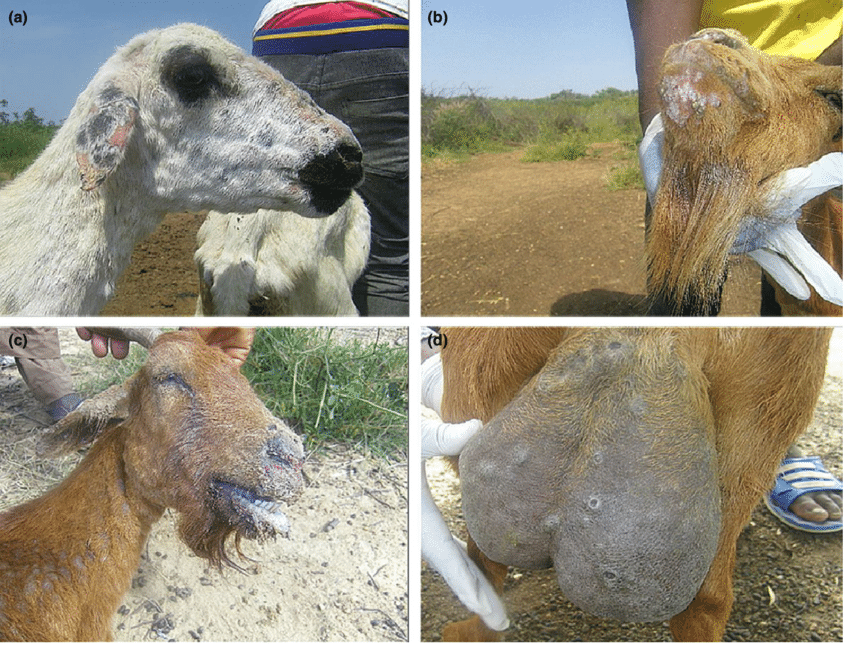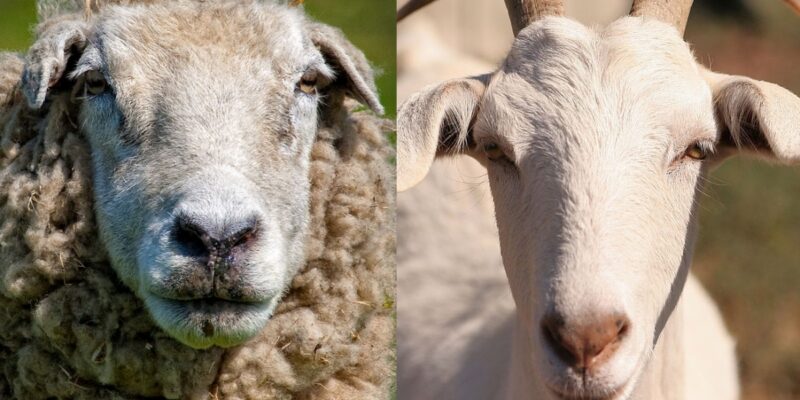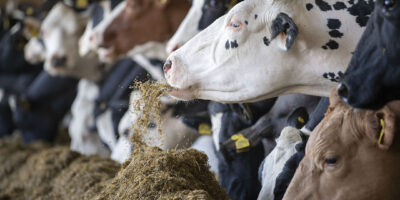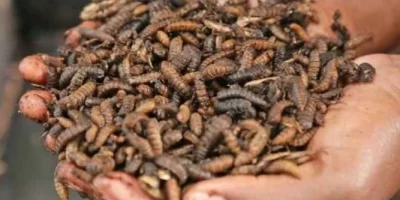Bacterial Diseases in Sheep and Goats – Johne’s disease: The most contagious, chronic diseases infecting the small ruminants is Johne’s disease. It is caused by the bacterium-Mycobacterium avium subspecies paratuberculosis (MAP). Due to its contagious nature, it is transmitted easily in the flock (or) herd. Primary mode of transmission is feacal-oral route, where as secondary mode of transmission is through milk & clostrum of infected ewes & does. Young aged animals of 3-6 years are more susceptible to the disease. The incubation period of disease lasts for about 12 months to several years, which makes it impossible for the cure. The infected animals may not show clinic sign of symptoms even after months of infestation.
The symptoms of Johne’s diseases are enlarged intestinal lymph nodes & a thickened corrugated intestinal tract, where as classic sign of the diseases in a sheep flock is distinct tail to the mob, comprising of sheep in poorer condition than the rest of the mob. Chronic weight loss with poor fleece, chronic pneumonia, mastitis, poor dentition of molar teeth is seen in individual middle-aged sheep. Severe infected animals may even die before showing the clinical sign of symptoms.
The primary management practice to control Johne’s disease is identifying, isolating the infected animals in the flock. Good herd management, improved hygiene, proper disposal of animal excreta will help to control the disease spread among the flock. Test & cull is the most common approach used to control Johne’s disease of sheep & goats where the breeds are tested for the signs of diseases & culled them in order to reduce the contamination.
Also Read: Black Headed Caterpillar: Black headed caterpillar management in coconut

Bacterial Diseases in Sheep and Goats
Tetanus: An important infectious diseases caused by the bacterium Clostridium tetani. It is non-contagious in nature. Primary moder of transmission is through deep punctured wound exposed & contaminated with the bacterial species. Vaccination with chemical agents like calcium salt, lactic acid also favours the disease initiation process.
Another source of transmission is through the contaminated genetilia which is not handled hygienically during parturition. Castration by open method, deep wound in the feet during grazing also acts as mode of transmission of the disease. The infected animals may even act as vectors of the disease to the man and other animals as bacterial spores may retain in the faeces for longer period of time. Anaerobic conditions are most favourable for the growth of the bacterial organisms.
The symptoms of diseases are restricted movement, muscle stiffness followed by unusual walking. The infected sheeps & goats show less interest in feeding. Lock-Jaw condition due to the stiff gait spasm of mouth muscles i.e., mouth muscles become tight so, that opening of jaws become difficult. Animals may hypersensitive i.e., over reaction to sudden noise & physical contact. The infected animals may die within 3-4 days of infection. The management practice includes identification of infected animals & the mode of entry.
The wounds should be cleaned immediately and drain them with deep incision & keep the animals away from metallic & sharp object. Make sure the animals are grazing on a hygienic area. Sterilize the equipment’s used for the parturition so that genetilia contamination may be avoided. Expose the animal body to the environment to prevent the disease occurrence. Annual vaccine with Bar-Vac CD/T @ 2cc/animal followed by booster shot again at 30 days later will help to prevent the disease.
Also Read: Banana Burrowing Nematode: Burrowing nematode management in Banana













